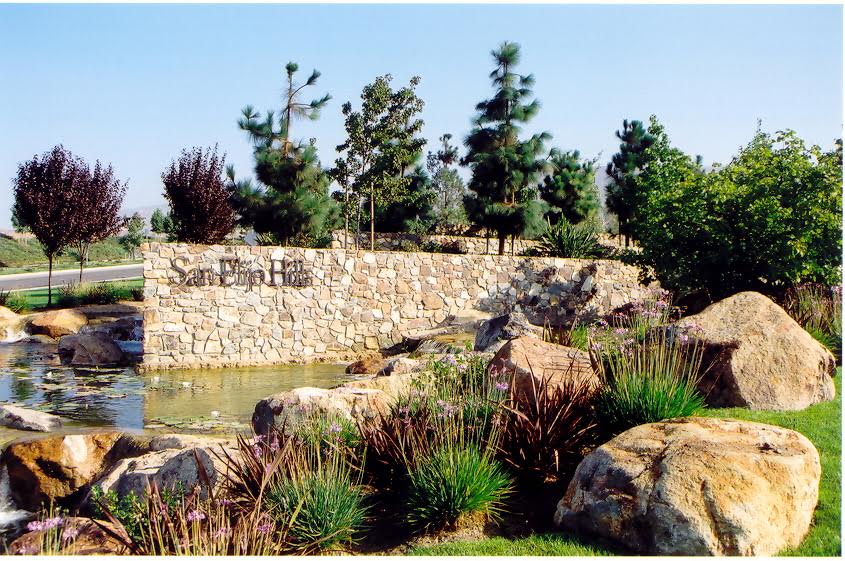April 29, 2004 —
Traditional towns have always used building materials that are available locally. It helps establish a community’s sense of place, as buildings take on the aesthetic character of their surroundings.
At San Elijo Hills, HomeFed Corp. used that same time-tested technique. Indigenous stone acquired during the grading process was used to visually link the built environment with the natural terrain.
“It is important to us to have our communities fit comfortably into the natural environment,” says Kent Aden, vice president of HomeFed Corporation, noting that more than half of the 1,920-acre property has been designated as open space, crisscrossed by 18 miles of trails.
Grading has been kept to a minimum: partly for aesthetic reasons – to maintain and enhance the breath-taking ocean views available from 26 of the 28 single-family home neighborhoods– and partly because the drill and blast grading required on about 80 percent of the site costs about five times more than typical grading.
While it would have been less expensive to use the rock as fill, San Elijo Hills decided to use the native stone for construction purposes throughout the community.
The most stunning examples are the community’s original two-story visitor center, now the site of Café Stoked!, which is clad with indigenous stone, and the main San Elijo Hills entry monumentation, which features a natural-looking streambed flanked with native boulders and natural stone walls. In addition to HomeFed’s use of stone throughout San Elijo Hills, the community’s guest builders and homeowners have used the stone for neighborhood monuments, walls, and everything from outdoor fireplaces to planters. For more information on San Elijo Hills, visit www.sanelijohills.com

